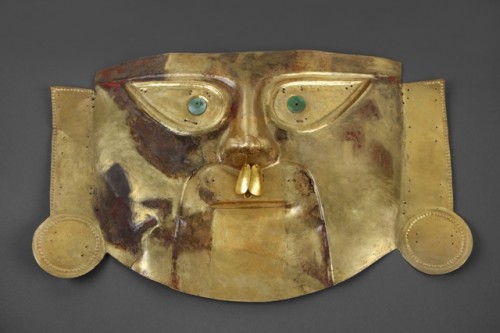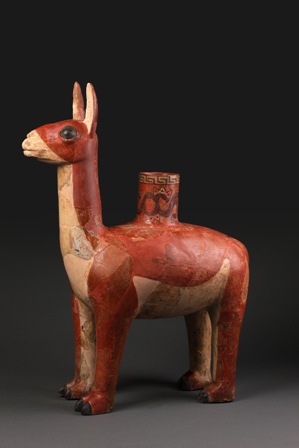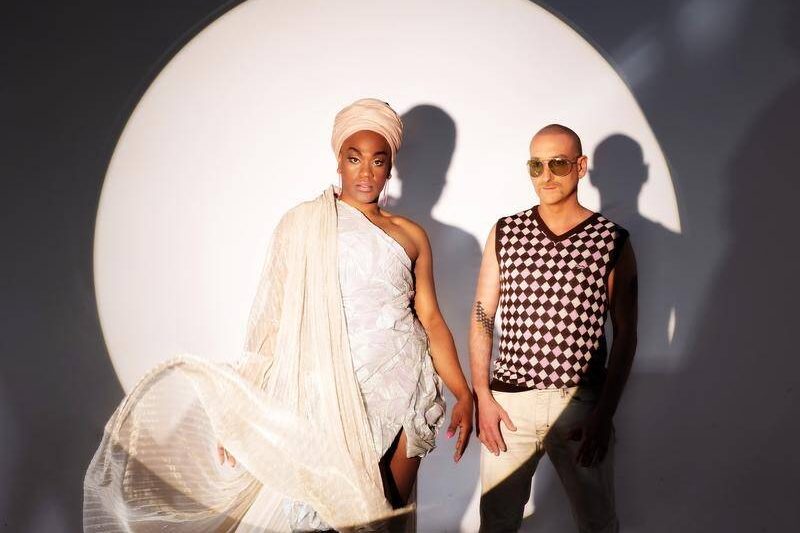A GLITTERING exhibition of priceless Inca treasures from Peru is to be the summer blockbuster exhibition at the National Gallery of Australia, it was revealed in a surprise announcement today.

“Peruvian art made of gold, silver, turquoise, shell, textiles and ceramics will enthral visitors to Gold and the Incas this summer and provide a totally new exhibition experience for Australians”, Radford enthused.
Serendipitously, the exhibition will coincide with 50 years of diplomatic relations between Australia and Peru and there was no doubt that the country had made available its genuine national treasures for the show, which is organised in co-operation with the Peruvian Ministry of Culture.
Deputy Chief Minister and ACT Treasurer, Andrew Barr, who formally made the announcement at the Gallery’s James O. Fairfax Theatre this morning, told CityNews that the Government was “happy to bring some gold to the economy over summer,” predicting that there would be plenty more ‘gold’ quips where that came from.
He said that in a city the size of Canberra, the promotional side of the event was very important and with visitation figures to the national capital increasing, he could only encourage local tourism and retail businesses to engage with the NGA and support the marketing campaign for this blockbuster exhibition. Eighty per cent of patrons at the gallery, Barr thought, could be expected to come from interstate and overseas so the government’s injection of $500,000 would go a long way to let the country know about this show.

Apart from the few Australians who tour to Peru and become Peru addicts, she said, most Australians were quite unfamiliar with this art, yet when you think about it, she added, “Peru is our Pacific neighbour—if you stand in Lima you’d see Darwin.”
Dixon agreed with CityNews’ suggestion that this is likely to be a ripsnorter of an exhibition from the public’s point of view, pointing out that there was a broad interest in the ‘mummy’ culture of Egypt that had much in common with the Inca funerary culture.
As well there would be lots of llamas in the exhibition and as Dixon noted, “llamas always help.”
Australians, she said, had seen something of Aztec art, but there were considerable differences between the art of Mexico in the art of ancient Peru and that wasn’t all to do with gold.
The Inca civilisation for instance, prized superb stonemasons and architect in Adobe, but since “we can’t transport architecture,” the objects on show would have to suffice and these are genuine treasures—one stone object is 1000 years old—from a culture that practised a “high art” tradition.
![Tumi [Sacrifical knife] gold, silver, chrysocolla, turquiose, lapis lazuli, spondylus; Sicán-Lambayeque culture North coast 750–1375 AD, from Museo Oro del Perú, Lima © Photograph Daniel Giannoni](http://citynews.com.au/wp-content/uploads/2013/09/inca-2.jpg)
Although she assured potential patrons that there would be gold, gold and more gold, a substantial portion of the exhibition was given over to silver, for Peru’s silver mines were almost as those for gold and just as was identified with the Sun and the masculine principle, so silver was identified with the moon and the feminine, creative principle. Objects demonstrating this would be on show.
“Gold and the Incas: Lost worlds of Peru,” from December 6 until April 21 2014 at The National Gallery of Australia only. Bookings will soon open via Ticketek.
Who can be trusted?
In a world of spin and confusion, there’s never been a more important time to support independent journalism in Canberra.
If you trust our work online and want to enforce the power of independent voices, I invite you to make a small contribution.
Every dollar of support is invested back into our journalism to help keep citynews.com.au strong and free.
Thank you,
Ian Meikle, editor




Leave a Reply